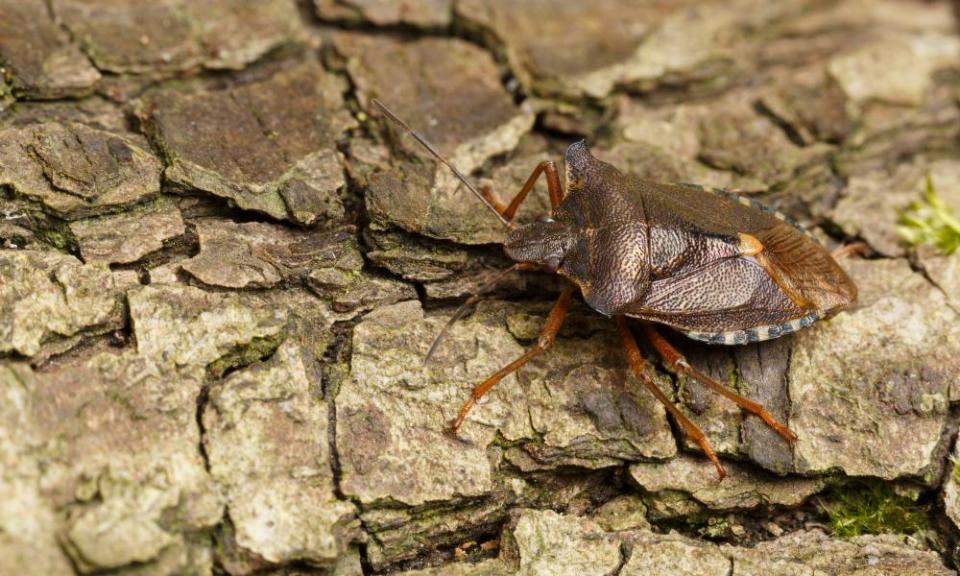Country diary: it is not just the pretty stinkbugs who are going scrumping

It looks as though it carries a switch; its wings are folded in a triangle within the yellow and black warning guards; its scarlet legs carry it over surfaces into open sunlight without fear of attack; its antennae pick up signals from mysterious sources. This is a red-legged or forest shieldbug, Pentatoma rufipes, basking on a log in the sunshine. It has a defensive strategy that its distinctive shape and colours advertise to potential predators. If I press the switch there will be a stink.
Shieldbugs are also called stinkbugs, and this one may let off a pong with an almond scent, the signature smell for cyanide. Perhaps this has something to do with the insect’s preference for apples (pips contain cyanide). With its pointed beak of a mouth it feeds on fruit juices and tree sap, and may sometimes suck on caterpillars. It could be detecting apples on the breeze and preparing for a journey to find windfalls. Eaters, cookers and crabs, many apples have become lush planets decaying in their orbits around the fruit trees, symbols of a providence neglected by affluent humans but feasted on by others.
It is not just the pretty stinkers that are going scrumping. A small tree with bright red apples and emerging ivy flowers is humming with hoverflies, droneflies, greenbottles, solitary bees and wasps. There are some here that may sip or bite into an apple opened by blackbirds, but there are also others hunting the scrumpers. A hornet, like a silent movie villain, grabs a bumblebee and makes off at speed through the trees, returning with a couple of accomplices. Hornets don’t look as if they would be finicky about stinkbugs.
The forest shieldbug is thought of as a pest of orchards in northern Europe. Where their sap-sucking forest nymphs are not gobbled up by blue tits they can withstand freezing winters and in spring cause deformed buds and fruit, particularly to pears. But, as the French historian Jules Michelet (The Insect, 1883) says: “When man is absent the insect ought to take his place, so that everything may pass through the great crucible, to be renewed or purified.”

 Yahoo Finance
Yahoo Finance 